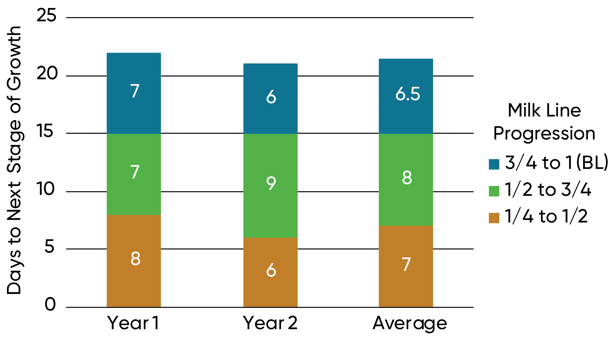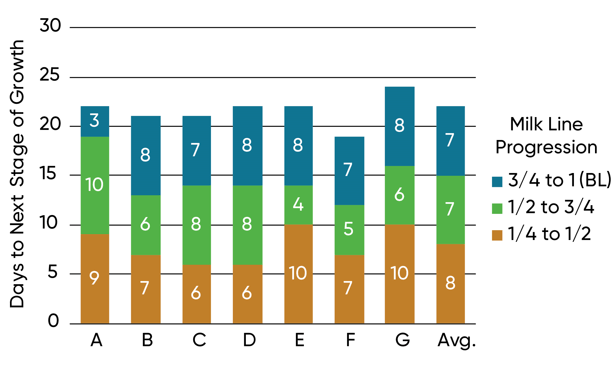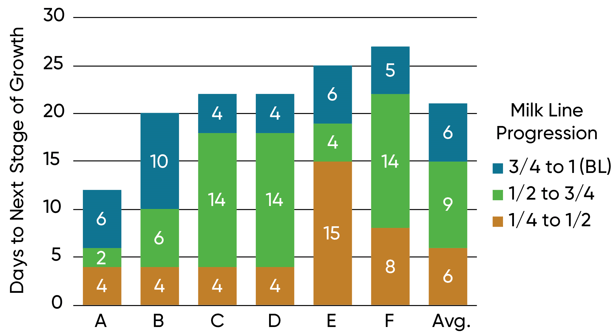Yield Impact of Premature Plant Death in Corn
9/13/2019
Field Facts written by Pioneer Agronomy Sciences
9/13/2019
Field Facts written by Pioneer Agronomy Sciences
Several conditions including severe gray leaf spot infestations, hail, drought, spider mite damage, or an early killing frost can cause premature plant death in corn. Pioneer agronomists have studied the impact on various hybrids of premature plant death (prior to black layer) on grain yield, moisture, and test weight in replicated plots. The objective of this three-year study was to learn more about corn response to death at various growth stages.
The corn plants in this study were prematurely killed by simulating complete defoliation. This was achieved by cutting the stalk off above the ear and removing all living leaves below the ear. The plants were defoliated at three stages of maturity (¼ milk line, ½ milk line, and ¾ milk line) and compared to plants that were allowed to reach physiological maturity, or black layer, in a normal manner. The plants in the black layer treatment were allowed to mature intact. Stage of maturity was determined by breaking three ears in half to reveal the position of the milk line. A summary of the yield data is presented in Figure 1.

Figure 1. Yield reduction due to premature plant death.
When corn plants were defoliated before ¾ kernel milk line, grain yield were significantly reduced all three years. Averaged over years and hybrids, complete defoliation of plants at ¼ milk line reduced grain yield 19%. Defoliating plants at ½ and ¾ milk line reduced grain yield by 8% and 3% respectively.
On average, it took seven days to get from ¼ milk line to ½ milk line, six days from ½ milk line to ¾ milk line and seven days from ¾ milk line to black layer (Figure 2).
Some variation in percent yield reduction and days between growth stages was observed among hybrids (Figure 3 and Figure 4). These variations are small, not surprising, and do not justify changes in hybrid management. The overall average numbers are the best guideline when evaluating early death due to frost, hail, drought, etc.

Figure 2. Days to maturity (multi-hybrid average).

Figure 3. Days to maturity: hybrid variation (Year 1).

Figure 4. Days to maturity: hybrid variation (Year 2).
Reviewed August 2019
The foregoing is provided for informational use only. Please contact your Pioneer sales professional for information and suggestions specific to your operation. Product performance is variable and depends on many factors such as moisture and heat stress, soil type, management practices and environmental stress as well as disease and pest pressures. Individual results may vary.
Pioneer® brand products are provided subject to the terms and conditions of purchase which are part of the labeling and purchase documents.